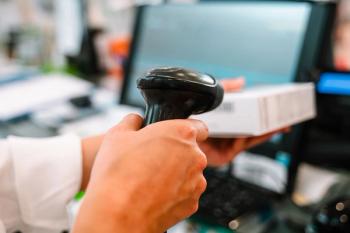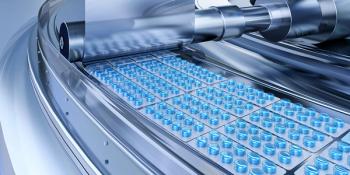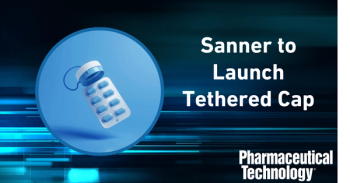
PTSM: Pharmaceutical Technology Sourcing and Management
- PTSM: Pharmaceutical Technology Sourcing and Management-03-02-2011
- Volume 7
- Issue 3
The US Biosimilar Regulatory Scheme and Comparison with the European Experience: Where Do Where Go From Here?
The authors outline the key decision points FDA must consider in putting forth a US regulatory pathway for biosimilars.
The Biologics Price Competition and Innovation Act of 2009 (BPCI Act) was signed into law in the US on Mar. 23, 2010. The BPCI Act created a new pathway for FDA to approve biological products shown to be “biosimilar” to an innovator biological product (called a “reference product” in the BPC Act). The article provides an overview of this new regulatory pathway and also compares it to its European counterpart. The overview focuses on issues and questions raised by the BPCI Act, particularly those that FDA will have to resolve in implementing the BPCI Act. This key issues focus on three main areas: the definition of a biosimilar product, the timeframe for when a manufacturer can seek approval of such a product, and additional requirements for marketing a biosimilar.
Definition of a biosimilar
To be a “biosimilar” product, a product first needs to be a “biological product.” The BPCI Act defines a “biological product” to be, among other things, “a virus, therapeutic serum, … protein (except any chemically synthesized polypeptide) or analogous product.….” Of great interest here is what constitutes a “protein” as well as what constitutes an “analogous product.” By “except[ing]” any chemically synthesized polypeptide from the definition of a “protein,” Congress probably only intends for the BPCI Act to contrast recombinant expression (e.g.,via a biological system, such as cell culture) and chemical synthesis (e.g., via a machine). In other words, regardless of whether there is a distinction between a protein and polypeptide, the BPCI Act means to cover recombinantly expressed proteins or polypeptides (instead of chemically synthesized ones). FDA itself, however, suggests that a polypeptide is distinguishable from a protein and that the BPCI Act only covers proteins; it is seeking public comment on “develop[ing] a regulatory definition … of [a] protein (as distinguished from a peptide or a polypeptide)” (1).
In other words, according to FDA, at least some polypeptides are not “proteins” as the term is used in the BPCI Act. Thus, under FDA’s interpretation, these non-protein polypeptides are not supposed to be covered by the BPCI Act. Such interpretation begs the question of what statute, if any, would cover these non-protein polypeptides. We suggest that, presumably, the Food, Drug and Cosmetic Act (FD&C Act) would cover these non-protein peptides (if marketed for human or animal consumption) because of the FD&C Act’s expansive definition of a “drug” as “articles intended for use in the diagnosis, cure, mitigation, treatment, or prevention of disease in man or other animals … and … articles (other than food) intended to affect the structure or any function of the body of man or other animals” (2).
For a “biological product” to be “biosimilar,” the BPCI Act requires that the biological product be “highly similar to the reference product, notwithstanding minor differences in clinically inactive components”(3). It also requires that there be “no clinically meaningful differences between the biological product and the reference product in terms of the safety, purity, and potency of the product”(4). Of interest here is that the BPCI Act seems to place great emphasis on clinical similarity rather than biological or structural similarity. Under this definition of “biosimilar,” it is conceivable that a protein with a primary sequence somewhat different from that of the reference product may nonetheless qualify as “highly similar” due to its clinical similarity with the reference product. Recognizing that the BPCI Act implicitly allows some structure differences, FDA is seeking public comment on what range of structure differences between a proposed biosimilar product and the reference product is consistent with the BPCI Act’s “highly similar” standard (1).
Regarding how to demonstrate the high similarity, the BPCI Act does not provide much detail other than generally pointing to data from “analytical studies,” “animal studies,” and “clinical studies.” FDA, therefore, is seeking public comment on what scientific and technical factors it should consider in determining whether the biological product is highly similar to the reference product.
In addition to the “biosimilar” standard, the BPCI Act also provides a parallel, optional “interchangeability” pathway under which an applicant can prove that the biosimilar product is “interchangeable” with the reference product. A biological product meets the “interchangeable” standard if it “may be substituted for the reference product [by a pharmacist] without the intervention of the healthcare provider who prescribed the reference product.” We suspect that, compared with the “biosimilar” provision, the “interchangeable” provision may not be used much by applicants. Despite being parallel to biosimilarity, interchangeability encompasses biosimilarity, but often constitutes a higher standard and, therefore, may require a much greater showing to FDA. If one can meet the higher “interchangeability” standard, however, the BPCI Act affords the first interchangeable biosimilar product a period of market exclusivity that expires on the earlier of the following:
• One year after first commercial marketing of the interchangeable product
• 18 months after the resolution of patent litigation
• 42 months after initial approval of the interchangeable product if patent-infringement litigation is ongoing or
• 18 months after approval of the first interchangeable biosimilar if that applicant has not been sued.
Determination of biosimilarity
Crucial questions are how to determine whether a follow-on product is “biosimilar” to the reference product and the degree of clinical trials needed to prove “biosimilarity.” Regarding how similar is “biosimilar,” the BPCI Act did not provide much detail other than mandating that there has to be “no clinically meaningful differences between the [follow-on] … product and the reference product in terms of the safety, purity, and potency”(5).To implement the BPCI Act, FDA faces the question of what to require from the follow-on sponsors to prove that there are “no clinically meaningful differences” (1). To gather opinions from various stakeholders, FDA recently held a public hearing seeking suggestions on this issue along with other implementation issues (6).
Different stakeholders disagree to a great extent on how much clinical testing FDA should require to approve the follow-on product. At one end of the spectrum, the reference-product sponsors (i.e.,“innovators”) urge FDA to require extensive clinical trials on all indications sought by the follow-on sponsors because “clinically meaningful differences” are often hard to predict from analytical data alone without well-designed clinical trials. At the other end of the spectrum, the follow-on sponsors urge FDA to use discretion in deciding whether clinical trials are necessary. In other words, the follow-on sponsors would like FDA to tailor the requirements according to the complexity of the product. According to the follow-on sponsors, at least in some cases, FDA should not require any clinical trial at all.
Not surprisingly, FDA is evaluating where there is a middle ground. As recognized by FDA, requiring too many clinical trials (e.g., by universally requiring separate trials for each indication or by always requiring clinically validated surrogate endpoints (a surrogate endpoint is a measure of effect of a certain treatment that may correlate with a real clinical endpoint but doesn't necessarily have a guaranteed relationship) may essentially close the door for follow-on products and thereby frustrate the very purpose of the BPCI Act, which is to provide an abbreviated approval pathway to encourage follow-on products to improve affordability of the often expensive biological drugs for consumers. Highlighting the problem of requiring too many clinical trials to prove “biosimilarity”, some follow-on sponsors (e.g., Teva and Sandoz) have decided that, at least initially, they will bypass the BPCI Act to rely on the full-length, regular approval pathway (i.e., which the innovator relies on) to seek approval for their follow-on products. On the other hand, however, requiring too few clinical trials may prevent FDA from fully identifying the differences between the follow-on product and reference product, thereby raising safety and efficacy concerns. Because of the problems resulting from requiring either too many or too few clinical trials, several middle-ground approaches were proposed during the hearing as outlined below.
Extrapolation of data. Allow follow-on sponsors to extrapolate clinical-trial data from one indication to another, thereby removing the burden on follow-on sponsors to run clinical trials for all indications. On this point, the follow-on sponsors urge FDA to allow extrapolation at least when two indications are based on the same mechanism of action. The innovators warn, however, that at least for complex biologics, such as monoclonal antibodies, a clinical trial is needed for each indication.
Limit testing. Only require pharmacokinetics (PK) and pharmacodynamics (PD) studies for premarketing approval of follow-on products and allow immunogenicity testing to be conducted in postmarketing studies. On this point, the follow-on sponsors essentially ask FDA to rely on PK/PD studies to determine biosimilarity while waiting for postmarketing immunogenicity and other data to determine interchangeability. The innovators, on the other hand, caution that it is often hard to predict clinical outcomes from analytical studies, such as PK/PD studies. For example, Amgen noted that half of the biosimilars developed in Europe have had unexpected clinical outcomes (7).
Data from non-US licensed products. Allow follow-on sponsors to use data from non-US licensed products. On this point, the follow-on sponsors urge FDA to allow them to rely on non-US licensed products to avoid duplicative clinical trials. The innovators argue, however, that the nontransitive property of “biosimilarity” means that, even if a follow-on product is biosimilar to the non-US licensed product and the non-US licensed product is biosimilar to the US reference product, it does not necessarily follow that the follow-on product is biosimilar to the US reference product.
Buying access to clinical-trial data. Allow follow-on sponsors to buy access to the innovators’ clinical-trial data to use in their applications for biosimilar approval. This idea originally came from a bill sponsored by Senator Bernard Sanders (I-VT). Although the bill is unlikely to become law, it likely will influence FDA in devising a mechanism by which the follow-on sponsors, by sharing some R&D cost with the innovators, avoid the cost of running extensive clinical trials. The bill proposes that the fee either be negotiated by the parties along five criteria or be set through arbitration (8). The five criteria are as follows:
• The actual out-of-pocket costs of the applicable clinical investigations
• The risks of the investigations, as reflected in the probabilities that similar investigations result in successful applications for marketing
• Any federal grants, tax credits, or other subsidies that reduce the net cost of the investigations
• the expected share of the global market for the product involved, by the party seeking to rely upon the investigations for marketing approval
• The amount of the time the holder or holders of the relevant applications or licenses has benefited from exclusive rights, and the cumulative revenue earned on the products that relied upon the regulatory test data at issue (8).
Degree of drifting
In addition to deciding how much data is required to prove “biosimilarity”, FDA must also decide how much drifting can be tolerated. Drifting refers to a phenomenon unique to biological drugs. Unlike small-molecule drugs, biological drugs have a complex structure that is highly dependent on a specific manufacturing process. Although exact copies of a small-molecule drug can be made at different manufacturing plants or even by different manufacturing process, making exact copies of biological drugs is almost impossible. Each manufacturing process update (e.g., implementing new technologies) can lead to slight changes; this is the phenomenon known as drifting.
Because manufacturing process update (i.e., drifting) can lead to improved efficiency and better consumer affordability, arguments have been made that FDA should not restrict drifting. But because drifting can also lead to unexpected changes in patient response and thereby cause safety (or even efficacy) concerns, some rules have to be set by FDA regarding how drifting is measured and how much drifting is allowed.
Because drifting is common to both the reference products and the follow-on products, follow-on sponsors argue that the rules set by FDA regarding drifting should apply in parallel to both the reference product and the follow-on product. In other words, follow-on products should not be treated any differently from the reference product. The innovators, on the other hand, are concerned that both the reference product and the follow-on biosimilar could change over time. The innovators imply that FDA should allow more room for the reference product to drift while restricting the extent that a follow-on product can drift.
In addition to the rules on how much drifting can be tolerated, FDA must also decide how a follow-on product is referenced against a reference product as the reference product drifts. In other words, should the follow-on product be referenced against the drifted reference product or the original reference product at the time of FDA approval? If the latter is chosen, the follow-on product may end up based on a reference product that no longer exist (i.e., because it is no longer made by the innovator). On the other hand, requiring that the follow-on product be referenced against the drifted reference product would put extra burden on the follow-on sponsors to “drift” along with the innovator.
Timeframes for biosimilar applications
A crucial question is when a manufacturer can apply for the approval of a biosimilar product. Significantly, the BPCI Act grants a 12-year exclusivity period to an innovator reference product. It provides that a biosimilar application “may not be made effective by the [FDA] until the date that is 12 years after the date on which the reference product was first licensed” (9). Thus, presumably, a manufacturer can submit a biosimilar application before the 12-year anniversary date (i.e., “critical date”), but FDA cannot approve the application before the critical date. Thus, an innovator gets 12 years of exclusive marketing rights for its approved biologic before any biosimilar manufacturer can obtain approval from FDA. The 12-year exclusivity may be extended for six more months for pediatric innovator product (1). It is unclear, however, whether FDA will start reviewing the application before the critical date and then promptly approve the application on the critical date or it will only start reviewing after the critical date. If FDA only starts reviewing after the critical date, an innovator gets further exclusivity period in addition to the 12 years while a biosimilar manufacturer waits for FDA approval.
There are some exceptions to the 12-year exclusivity rule, however. The exclusivity does not apply to:
• “A supplement for a biological product that is the reference product or ”
• “A subsequent application filed by “the same … manufacturer or a licensor” of the reference product or a “predecessor in interest, or other related entity” for (I) a change … that results in a new indication, route of administration, dosing schedule, dosage form, delivery system, delivery device, or strength; or (II) a modification to the structure of the biological product that does not result in a change in safety, purity, or potency.”
The BPCI Act does not define what “other related entity” fit within the exception. Recognizing today’s complex corporate and business relationships, FDA is seeking public comment on what types of related business entities may be deemed ineligible for a second 12-year exclusivity period (1).
Furthermore, in saying that the exception covers “a modification to the structure … that does not result in a change in safety, purity …,” the BPCI Act implies that a modification resulting in a change in safety, purity, or potency would qualify for a second 12-year exclusivity period. FDA is seeking public comment on what factors it should consider in determining whether a modification results in a change in safety, purity, or potency such that a second 12-year exclusivity period is warranted (1).
Other requirements for marketing approval
In addition to approval, what else needs to be done in order to market the product? In addition to seeking FDA approval by supplying data from “analytical,” “animal,” and “clinical” studies to demonstrate biosimilarity, the filing of a biosimilar application also may trigger a complex patent-dispute procedure between the biosimilar applicant and the reference-product innovator. The patent-dispute procedure is modeled in some aspects after the patent dispute procedure in the Hatch–Waxman Act of 1984, but has notable differences. For example, one major difference is the lack of an Orange Book listing of patents in the biosimilar context. Another difference is that while under the Hatch–Waxman Act, FDA must stay its approval for 30 months or until relevant patent litigation concludes, under the BPCI Act, no 30-month stay exists. In other words, FDA can approve a biosimilar product before relevant patent litigation concludes. Therefore, upon FDA approval, a biosimilar applicant under the BPCI Act can market a biosimilar product at the risk of ultimately paying patent-infringement damages if it ends up losing the litigation.
US regulatory biosimilar pathway versus European counterpart
Like the US, the European Union also recognizes the “complexity of biological/biotechnology-derived products.” Therefore, the European Medicines Agency (EMA), the equivalent of FDA, implemented a biosimilar-specific regulatory pathway separated from the generic-drug regulatory scheme. There are two main existing differences and a third potential difference between the US and the European biosimilar regulatory pathways: duration of exclusivity, biosimilarity standard, and pharmacovigilance requirements.
Duration of exclusivity. While the US provides a 12-year exclusivity for an innovator- biological product and five-year exclusivity for an innovator-chemical drug, the EU provides a 10-year exclusivity for both biological products and chemical drugs.
Biosimilarity standard. As previously discussed, the US universally defines biosimilarity as “highly similar … notwithstanding minor differences in clinically inactive components; and … there are no clinically meaningful differences … in terms of the safety, purity, and potency.” The EMA, however, has said that “the differences between the similar biological … product and the reference (innovator) … product…will have to be justified [by the biosimilar applicant] by appropriate studies on a case-by-case basis.” Ultimately, however, FDA may likewise make its assessments on a case-by-case basis.
Pharmacovigilance requirements. A third potential difference between the US and the EU is the pharmacovigilance requirements on biosimilar products. Pharmacovigilance is the science of detecting, assessing, and preventing long- and short-term adverse side effects of medicine. In addition to monitoring a drug’s adverse side effects during clinical trials to obtain FDA approval, a drug manufacturer is often required to monitor the drug’s adverse side effects after it markets the drug to the consumer. While FDA is still seeking comment and has not published any rules regarding such requirements, EMA has decided to require biosimilar products to undergo the same postmarketing monitoring procedures as the innovator reference product. In this regard, the EMA requires that the “clinical safety of similar biological medicinal products must be monitored closely on an ongoing basis during the postapproval phase including continued benefit-risk assessment” (10).
Conclusion
Implementation of the BPCI Act is just beginning. There are complex scientific and intellectual property issues that companies will face before we see biosimilar products being approved by FDA. While challenges certainly exist, the public and the biologic and pharmaceutical industry look forward to potential cost savings and growth opportunities in this area.
David Rosen is cochair of the life-science industry team and head of the FDA practice group, tel. 202.672.5430, drosen@foley.com and Larry Lian is an associate in the chemical biotechnology and pharmaceutical intellectual property practice, tel. 202.295.4774, llian@foley.com, both at the law firm of Foley & Lardner.
References
1. FDA, “Approval Pathway for Biosimilar and Interchangeable Biological Products; Public Hearing; Request for Comments,” Fed. Reg. 75 (192), 61497–61501 (Oct. 5, 2010).
2. Food, Drug and Cosmetic Act, Sec. 201(g)(1).
3. US Code, Title 42, The Public Health and Welfare, Chap. 6A, Public Health Service, Subchapter II, General Powers and Duties, Part F, Licensing of Biological Products and Clinical Laboratories, Subpart 1, Biological Products, Sec.262, Regulation of Biological Products, (i)(2)(A).
4. US Code, Title 42, The Public Health and Welfare, Chap. 6A, Public Health Service, Subchapter II, General Powers and Duties, Part F, Licensing of Biological Products and Clinical Laboratories, Subpart 1, Biological Products, Sec.262, Regulation of Biological Products, (i)(2)(B)
5. US Code, Title 42, The Public Health and Welfare, Chap. 6A, Public Health Service, Subchapter II, General Powers and Duties, Part F, Licensing of Biological Products and Clinical Laboratories, Subpart 1, Biological Products, Sec.262, Regulation of Biological Products (i)(2).
6. FDA, Approval Pathway for Biosimilar and Interchangeable Biological Products Public Meeting, Public Hearing, Silver Spring, MD, Nov. 2–3, 2010. www.fda.gov/Drugs/NewsEvents/ucm221688.htm, accessed Feb. 25, 2011.
7. “Amgen to Provide Testimony at FDA Hearing on Biosimilars,” Kerentech, Nov.2, 2010. www.kerentech.com/?p=5107, accessed Feb.25, 2011.
8. S. 3921.IS, Ethical Pathway Act of 2010, 111th Congress (2009–2010), Washington DC, http://thomas.loc.gov/cgi-bin/query/z?c111:S.3921:, accessed Feb.25, 2011.
9. US Code, Title 42, The Public Health and Welfare, Chap. 6A, Public Health Service, Subchapter II, General Powers and Duties, Part F, Licensing of Biological Products and Clinical Laboratories, Subpart 1, Biological Products, Sec.262, Regulation of Biological Products, (k)(7).
10. EMA, Guideline on Similar Biological Medicinal Products Containing Biotechnology-Derived Proteins as Active Substance: Non-Clinical and Clinical Issues, EMA Committee For Medicinal Products for Human Use (Feb.22, 2006).
Articles in this issue
almost 15 years ago
CSR and Sustainability Forumalmost 15 years ago
Bristol-Myers Squibb Moves Forward with HIV/AIDS Project in Africaalmost 15 years ago
Drug Development for Government, Nonprofit, and Developing-World Marketsalmost 15 years ago
A Roundup of Informexalmost 15 years ago
Changes Underway for Biopharmaceutical OutsourcingNewsletter
Get the essential updates shaping the future of pharma manufacturing and compliance—subscribe today to Pharmaceutical Technology and never miss a breakthrough.




